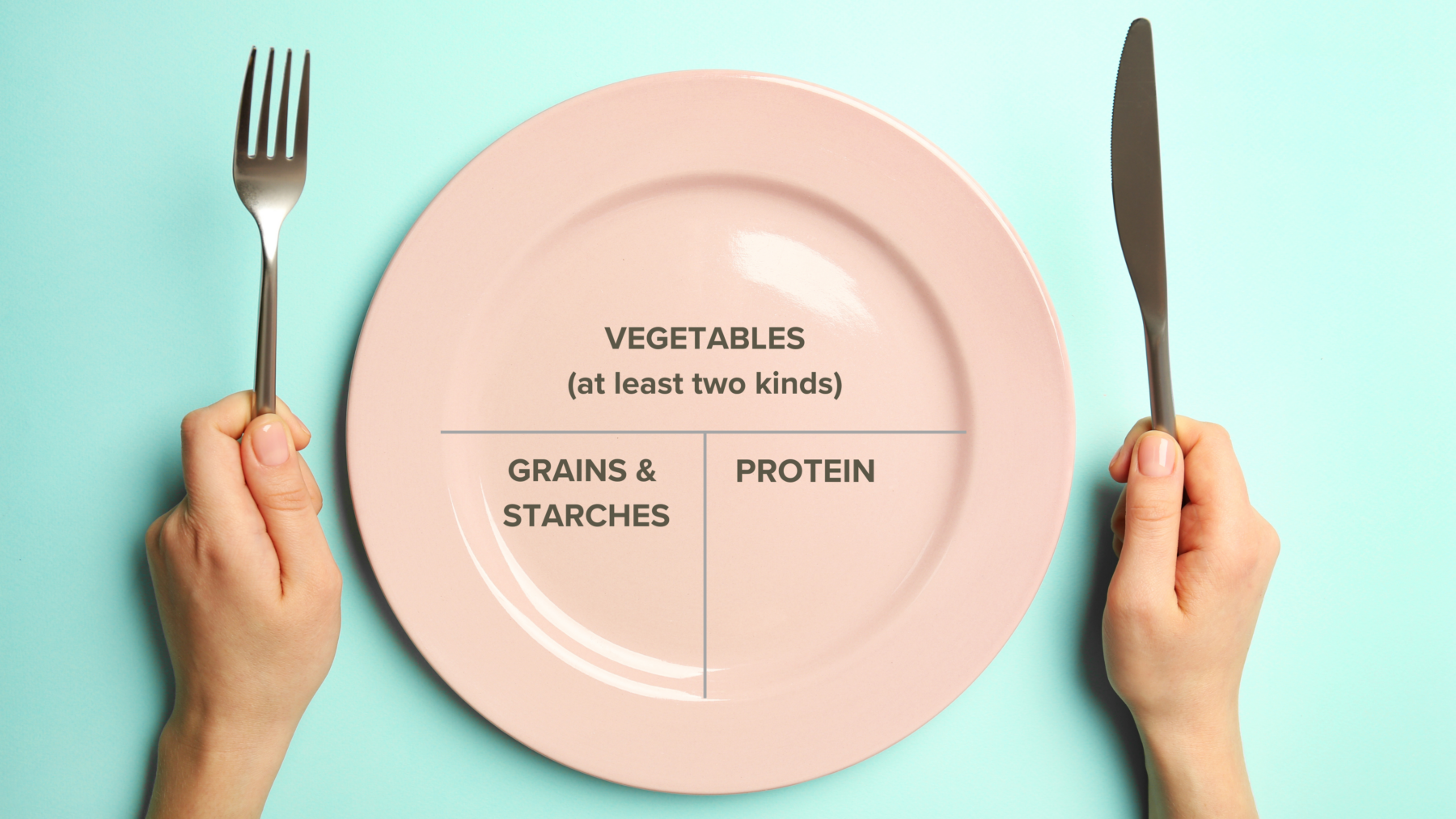Enjoying Holiday Meals with Diabetes
We are on the heels of the holiday season, and that brings holiday eating! For people living with diabetes, event-based food can be an overwhelming thought. Let’s talk about some basic tools for navigating the holiday plate.

Understanding Carbohydrates: The Key to Blood Sugar Control
Carbohydrates (starches and sugars) are the types of foods that most heavily affect blood sugar. There are two typical ways to account for carbs: estimating a carb count or estimating through the plate method.
- To carb count, look for the total grams of carbs in each of the foods you are going to eat in a meal and try to stay at or under 60 grams per meal.
- The plate method is more visual. Using a 9-inch dinner plate, divide it in half and fill one-half with non-starchy vegetables. Then take the other half of the plate and divide it in half. Fill up one quarter with protein, and the last quarter is for carbs. Combine the starches and the sugars if you are going to be eating them all at once. You want the total serving size to be about a cup (or less), or the size of your fist.
Satisfying Your Sweet Tooth
When you create a balanced plate, the fiber from the non-starchy vegetables and the protein will fill you up and keep you full so you won’t be left hungry. If you are going to have desserts after the large meal, try to wait a few hours after eating, go for a walk, and hydrate with plenty of water to help digest those carbs and get them out of your system before putting more in. There tends to be a variety of desserts, so if you have one favorite or want some of everything, simply set a limit. Again, we want to generally stay under one total cup or one fist for everything that is on that plate. Also, remember to move and hydrate with water after you enjoy them!
Slow Down and Savor

Eat slower, enjoy the food while it’s in your mouth, and ask yourself every few minutes if you are full. What and how much we eat comes from many more directions than just hunger. Our taste buds will like the taste of something and then signal our brain to eat as much as we can as fast as we can because it tastes good! Often, we won’t stop until we are too full and uncomfortable. If we slow down and try to listen to what our body is saying, often we realize we can eat much less and still be satisfied.
Falon Sisson is a Certified Family Nurse Practitioner at Memorial Health System, where she supports patients of all ages in primary care. She also serves as Memorial’s Diabetes Program Coordinator, committed to helping patients navigate this complex disease with her arsenal of tools and education. For more information, visit wearememorial.com/diabetes.
